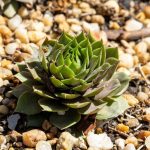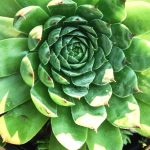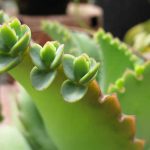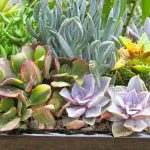Delve into the intriguing world of nurturing plant species, a captivating tale of maternal care in the botanical realm. Meet the hen and chicks plant – a depiction of a mother hen sheltering her chicks until they are ready to venture out on their own into the world.
Unlike other succulents, the hens and chicks plant emerges as a symbol of resilience in colder climates, capable of surviving freezing temperatures. Its robust nature makes it a favored choice for many gardeners, especially in the northern regions of the country. Find warmth and durability in nurturing your very own hens and chicks family.
Through centuries of cultivation, the specific classification of hens and chicks succulents has blurred due to extensive breeding efforts. Standing tall within the Sempervivum or Jovibarba family, these succulents offer a unique blend of care requirements. With various common names like ‘common houseleek’ or ‘St. Patrick’s cabbage’, the hen and chicks plant boasts an intriguing history that dates back to Southern Europe and Northern Africa.
As the seasons change, observe the life cycle of the hen and chicks plant, witness the blossoming of its unique flower shoots, and marvel at the circular dance of life as the offspring take flight. Embrace the tranquility of dormancy during the winter months, knowing that the hens and chicks are merely preparing for their vibrant return in the spring.
Not only are hens and chicks visually captivating with their lush greenery and distinctive rosettes, but they also offer practical benefits. Resistant to common garden pests like deer and rabbits, these succulents are a hassle-free addition to any indoor or outdoor garden. Explore the endless possibilities of expanding your collection to create a harmonious blend of sedum and other succulents.
Succulents, like human skin producing melanin to protect against the sun, adjust colors to prevent sunburn, indicating stress without harm to the plant. For more vibrant colors in your hens and chicks plants, consider placing them under direct sunlight, with caution on temperature levels.
## Planting Hens And Chicks
Growing hens and chicks succulents from seed or starts is viable. Seeds are typically planted indoors in fall for winter sprouting, readily available for purchase in nurseries come spring. Plant them before summer sets in, post the last frost.
Pop your new plants in full sun arrangement, providing afternoon shade in hot regions. The soil can be gravelly and meager as long as it’s well-draining. Potting hens and chicks is a breeze, whether indoors or outdoors, just ensure the right growing conditions, particularly ample sunlight indoors.
Plant hens close to the base of the rosette, compacting the soil securely. Keep the soil dry for at least the initial week post-planting to allow the succulent to mend any damaged roots before regular sparse watering routine suitable for succulents.
For homegrown seeds, use sandy, well-draining soil in a shallow tray. Sprinkle seeds, lightly cover them with soil, mist, and keep moist till sprouting. Apply a fine gravel layer as mulch and gradually reduce watering as seedlings mature, ensuring dry leaves.
## Care
Hens and chicks are incredibly low-maintenance but require specific parameters for optimal thriving.
### Sun and Temperature
Full sun exposure is essential for hens and chicks, with preferred temperatures around 65-75°F, survivable beyond that range. Growing zones 3-8 are recommended, but adaptable to hotter climates under suitable conditions.
They may go dormant in extreme weather; hence, partial afternoon shade in hot zones is beneficial to deter semi-dormancy.
### Water and Humidity
Thanks to water-retaining capacity, sempervivum succulents need minimal watering. Deeply water only when the soil has been dry for a few days, aiming to keep above-ground parts dry to avert pests. During dormancy in winter, limit watering significantly.
Succulents are more prone to overwatering than underwatering, typically requiring no water in non-desert settings.
### Soil
A well-draining medium is vital for healthy succulent growth, preventing root rot caused by waterlogging. Opt for sandy soil or add perlite to loamy soil, enhancing drainage. Container gardening requires good drainage holes.
Hens and chicks aren’t nutrient-demanding, thriving even in poor soil. While organic matter can aid drainage, it’s often unnecessary, with a neutral pH being preferable.
### Fertilizing
Fertilization isn’t typically necessary, but a slow-release balanced fertilizer post-dormancy can offer a boost if desired.
### Pruning
Minimal pruning is required unless confined spaces cause upward growth, necessitating thinning for ground-level maintenance. Cutting flower stalks won’t prevent rosette fading post-flowering, a natural cycle.
### Propagation
Propagating hens and chicks is straightforward, ideal for novices, best done during active growth periods. Healthy, non-flowering plants with established roots can be propagated for easy growth conducted by following specific steps.
## Troubleshooting
For further information, kindly refer to the detailed documentation for optimal plant care and troubleshooting guidelines.


Living a low-maintenance life, chicks and hens plants seldom encounter growth issues and are generally unattractive to pests. However, should you face any challenges with these resilient plants, here’s a helpful overview.
Growing Problems
The primary danger to plants in the Crassulaceae family is overwatering. Excessive moisture causes the plants to become mushy and vulnerable to rot, primarily starting at the roots. Always lean towards underwatering than overwatering, as these plants recover better from dryness. In case of overwatering, allow the soil to thoroughly dry before rewatering or consider moving the succulent to a drier environment.
Another issue to watch for is bolting. When stressed, a young hen plant may rush to flower for reproduction. To prevent premature flowering, nurture the mother plant, ensuring appropriate watering and ideal conditions for producing offspring.
Pests
Hens and chicks are usually ignored by garden pests, but sometimes aphids may target them, sucking vital juices from the leaves. Swiftly address aphids using organic methods like insecticidal soap or beneficial insects such as ladybugs.
Mealybugs are another pest that enjoys succulent sap and can infest hen and chick plants. Control these pests with similar methods as aphids, adding mycoinsecticides if needed.
Diseases
Excessive water can lead to bacterial issues, including crown rot and endophyllum rust. Detect and eliminate affected areas promptly, apply fungicide if necessary, and maintain low soil moisture to prevent these diseases.
Frequently Asked Questions
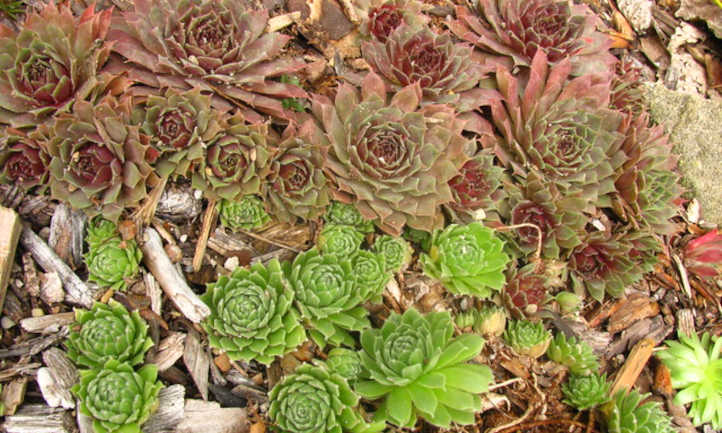

Q: Do hens and chicks survive winter?
A: Yes, they’re among the hardiest cold-resistant succulents for gardens!
Q: How fast do hens and chicks spread?
A: Expect 1-3 generations within a growing season, expanding up to 3 feet in outdoor settings.
Q: Can hen and chicks grow indoors?
A: Yes, provided they receive ample sunlight and space to propagate.
Q: Do hens and chicks plants prefer sun or shade?
A: Sun-loving but may benefit from partial shade in intense afternoon heat in warmer climates.


